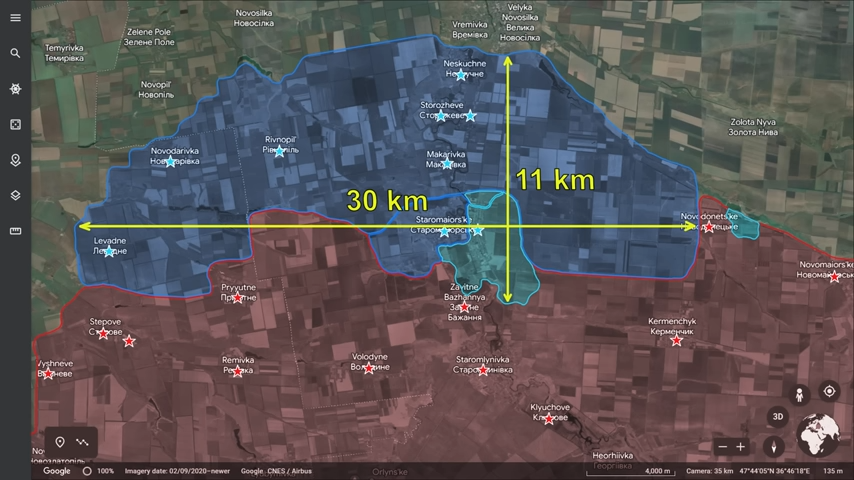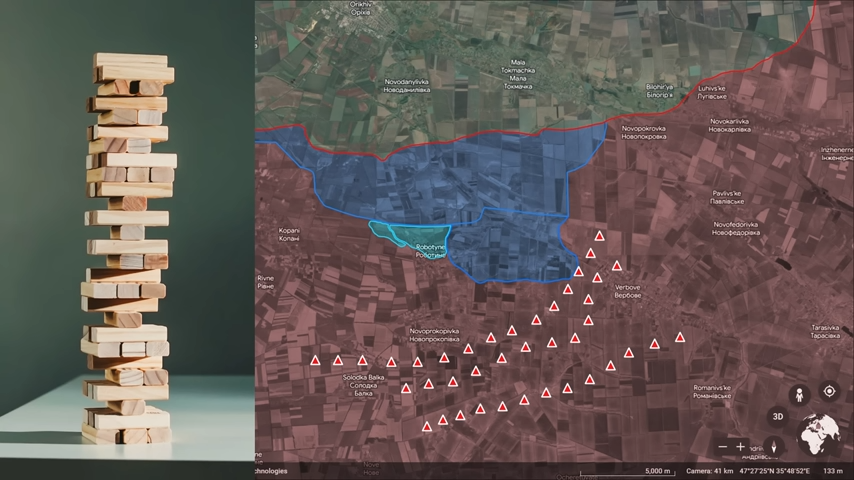On 21 August, Ukrainians hit another strategic airfield on the territory of the Russian Federation, this time in the Kaluga region, 200 km from the border.

Russian sources reported that the attack was conducted with drones, but interestingly, a lot of prominent Russian sources noted that the Ukrainian drones once again hit Russians from the back.

It was reported that just like in the case of an attack on the airfield in the Novgorod region, a Ukrainian sabotage group launched several quadcopters with explosives from the nearby settlements.

Russian media claimed that all drones were detected on time and shot down, apart from one drone that hit one aircraft. They claimed that this aircraft was not working anyway, which is why the Ukrainian attack was a failure.
The Spokesman for Ukrainian Intelligence commented on the recent attacks on the Russian airfields and officially stated that the attacks were planned and executed by Ukrainian Intelligence, which dispels all previous doubts and confirms that Ukrainians have an impressive network of spies and saboteurs deep inside Russia.
He also claimed that multiple Russian aircraft were successfully destroyed or at least severely damaged, and these aircraft are almost certainly Russian strategic bombers Tu-22m3 that Russians are constantly using for conducting missile strikes on Ukraine.

The morning also started out loud in Moscow, where Russians suffered another drone strike. This one, however, was completely different, as Ukrainians used long-range unmanned aerial vehicles that were launched from the territory of Ukraine.

Russian sources published footage of the Russian air defense work and reported that all airports in the region were closed.

Later, the locals reported an explosion and fire somewhere near Moscow. So far, the details are unclear, but it seems like the drone managed to pass air defense.

Another interesting strike happened in Crimea. The Russian Ministry of Defense reported that Ukrainians launched 2 drones. This is very unusual because launching lonely drones on large distances is less effective than launching them in large numbers.

It is unlikely that Ukrainians ran out of drones, so the only reason for adopting such a tactic would be to test the Russian air defense in preparation for a new strike that focuses on completely different military objects. Recently, Ukrainians also launched a lonely missile S-200, which further indicates that Ukrainians are preparing a big surprise.
In light of a recent loud series of failures, Russians launched a massive disinformation campaign in order to change the sentiment of the population in the Russian media space.
Russian sources published a video of Russian forces moving through the village and claimed that the Ukrainian defense near Kupiansk collapsed and Russian forces entered the village of Synkivka.

Moreover, some less prominent sources started claiming without any corroborative evidence that Russians somehow penetrated the front line in at least two more places and took several villages very far from the front line.

Ukrainian fighters that are actually fighting in Synkivka reported that the front line around Kupiansk is virtually not moving.
Later, the videos were geolocated, and it turned out that they were filmed half a thousand kilometers away in Voronovo, which is near Lysychansk.

Russian sources received a huge backlash for posting untrue information, which is why most of them followed up with clarifications, claiming that it was by mistake.
Recently, Russian military bloggers also widely circulated footage of a tank battle and claimed that Ukrainians gathered the last available forces for the counteroffensive, made the last decisive attempt to breach the Russian defense in the Zaporizhzhia region and were completely defeated.

Later, it turned out that this was a one-year-old footage from a completely different region.
In reality, in the aftermath of methodical offensive actions, Ukrainians got 7 km deep on a 16 km wide front line in the Orikhiv direction and 11 km deep on a 30 km wide front line in the Velyka Novosilka direction.


It is true that even such gains are not yet strategically significant. However, the reason why Ukrainians are slowly but surely pushing precisely in these two directions is simple – this is where the Russian defense lines are the closest to each other, meaning once Ukrainians pass them, there will be virtually no fortifications in the way.

In all other regions, the Russian defense lines are really far from each other due to the local geography and other factors.
Some analysts drew an analogy to the Jenga game – Ukrainians are gradually undermining the Russian defense in its weakest spots, and the Russian defense seems relatively stable until it crumbles.

The key is preserving resources while constantly creating conditions that force Russians to burn their reserves the same way we have seen them do it: Urozhaine, Staromaiorske, Mararivka, Storozheve, and Neskuchne.
In our daily frontline report, we pair up with the military blogger Reporting from Ukraine to keep you informed about what is happening on the battlefield in the Russo-Ukrainian war.








